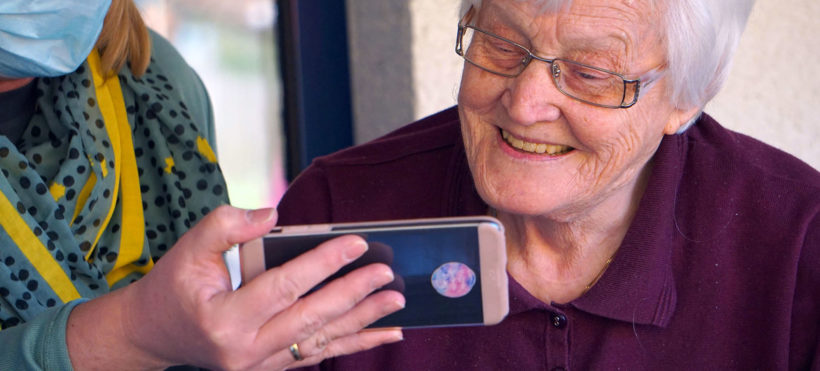On the International Day of Older Persons, the United Nations Secretary-General and the Inter-American Commission on Human Rights (IACHR) highlighted the need for States to intensify their efforts to reduce the digital divide affecting older people.
UN Secretary-General António Guterres said that “digital equality must include all segments of society, regardless of age”, and older people “are perhaps the ones who need the most support” to meet the challenge posed by the growing technological dependence of today’s world.
Both Guterres and the IACHR on Friday expressed concern about the impact on older people of inequalities in access to digital technologies during the current covid-19 pandemic.
“The internet tool determines in many cases the possibility of having or not having family, social and community life interactions, as well as the realisation of fundamental rights,” recalled a statement by the IACHR.
Among others, it mentioned access to information, the rights of assembly and association, civil and political rights, the right to education, to health and to participate in cultural life.
The IACHR noted that during the pandemic “the impact of the digital divide on older persons was accentuated, due to the increasing digitisation of a wide range of public and socio-health services, such as telemedicine, banking procedures, information on public transport and educational platforms”.
“While digital tools play an enabling role in the management of public goods and services, they can also represent an obstacle for those who face barriers in accessing them, due to lack of connectivity and the digital skills to use them,” the IACHR stressed.
Guterres also said that older people are at higher risk from the threat of cybercrime, so “we must strengthen their digital capacities” while sustaining the fight against criminals.
His office recalled that in 2019, of the world’s 7.7 billion people, at least 703 million were over 65, and over the next three decades that figure will double to 1.5 billion by 2050. Of these, 1.1 billion will be in the developing countries of the South.
Despite rapid digital innovation, half of the world’s population is still not connected to the internet and there is a stark contrast between the most developed countries, with 87 per cent connectivity, and the poorest, with just 19 per cent. Inequality is felt most by older people and women.
In Europe, for example, only one in four older people have basic or above basic digital skills, compared to two in three in the 35-44 age group, three in four among 25–34-year-olds, and four in five among 16–24-year-olds.
A 2019 survey showed that in the European Union only one in five respondents aged 75 and older engage at least occasionally in internet activities, compared to 98 percent of those aged 16-29.
In the Americas, a report by the IACHR and its Office of the Special Rapporteur for Freedom of Expression found that since 2015, people aged 15-29 use the internet seven to nine times more than people over 60.
It also showed that structural inequalities reinforce the digital divide, including among older people themselves, according to socioeconomic levels or geographic areas in which they reside, and these situations would have deepened during the pandemic.
The IACHR recalled that the 2015 Inter-American Convention on the Protection of the Rights of Older Persons establishes the commitment of States to adopt measures to ensure the access of older persons, on equal terms with others, to information and communications.
Finally, a call was reiterated to “accelerate policies for universal and quality access to the internet”, and to promote “education and support for older persons in the development of digital competences and skills”, with an approach that takes into account socio-economic, geographical and gender inequalities.










